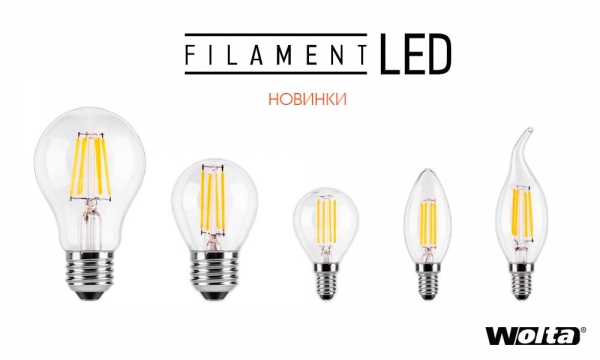
In the past decade, energy-saving technologies firmly entrenched in the world of lighting solutions, becoming almost the main trend.
LEDs have almost completely replaced outdated incandescent bulbs, replacing them with warm, soft light more neutral range. Repeatedly increased energy efficiency, decreased heat dissipation, increased tenfold service life. Yet many of us still miss the unique atmosphere, created by incandescent bulbs. Let them work only 1000 hours, let warm air in vain, but in them this unique spirit of a bygone era, which is so carefully trying to preserve many of today’s interior designers.
Filament bulb is a relatively new technological development that combines the aesthetic presentation and the emitted spectrum of a traditional incandescent bulb with saving and durable lighting solutions based on LED. In the role of a light-emitting element led here is the thread (from the English. filament — filament) is a unique semiconductor component produced according to the technology “chip on glass”. In principle it’s all the same well-known LEDs, but how they can be called truly revolutionary. If the standard LED lamp they are located on so-called led matrix, needs more heat dissipation, here the led crystals are equidistant distributed on the glass/sapphire substrate covered with the phosphor layer and are connected to each other sequentially. What is the advantage of such technical implementation? First of all, so managed to solve one of the main problems of aesthetics, LEDs, namely, their inability to emit light at a wide angle. Accommodation on a transparent substrate and a coating of phosphor is allowed to expand the beam angle from 160° to 300°. Filament lamps do not Shine at one point under the other, and uniformly filled with soft light all the space around them.
A fair contribution to the energy efficiency filament lamps makes a series connection circuit of a large number of led chips: 28 one filament terminal. The work supplies power to the driver in this case is greatly simplified, because the combination of the two filaments is supplied with the voltage 100V. That is, the voltage conversion compared to a standard network not so much. In the case of standard LED lamp voltage had to be lowered multiple times, simultaneously solving the problem of heat dissipation.
And of course, not to mention the real highlight of filament bulbs, which makes them similar to traditional incandescent bulbs. All the matter in the phosphor coating based on silicone resin. Passing through it, emitted by diodes, the light takes on such a nice looking light temperature. A shift towards the green and red ranges makes it soft, soothing and comfortable. This contributes to the gas that fills the glass bulb of the lamp and simultaneously solves the problem of dissipating heat generated by the filament rods. Unfortunately, there is such a technical implementation one weakness: like normal filament lamp filament lamp are quite fragile. Upon impact on a hard surface the glass bulb is easily broken, the gas disappears and the led strands are found to be unserviceable.
Summarizing all the above, the main advantages of filament lamps:
• the naturalness of the emitted light (color rendering index 80 Ra).
• wide-angle scattering (> 300°);
• low ripple factor (< 5%);
• high efficiency (90% higher than incandescent lamps);
• reliability (minimum life of 25 000 hours);
• attractive design.
Considering the ratio of price and quality, filament lamps have all the chances to take the palm from the standard led lamps. This is evidenced by the interest from major producers. So, the German company Wolta, which had always been a timely introduction of high-tech engineering solutions, has already launched its own series with the FILAMENT LED lamp bases E27 and E14. The line includes a large variety of filament lamps of various shapes with the capacity of 5, 7 and 9 Watts. The stated service life is 25 000 hours.